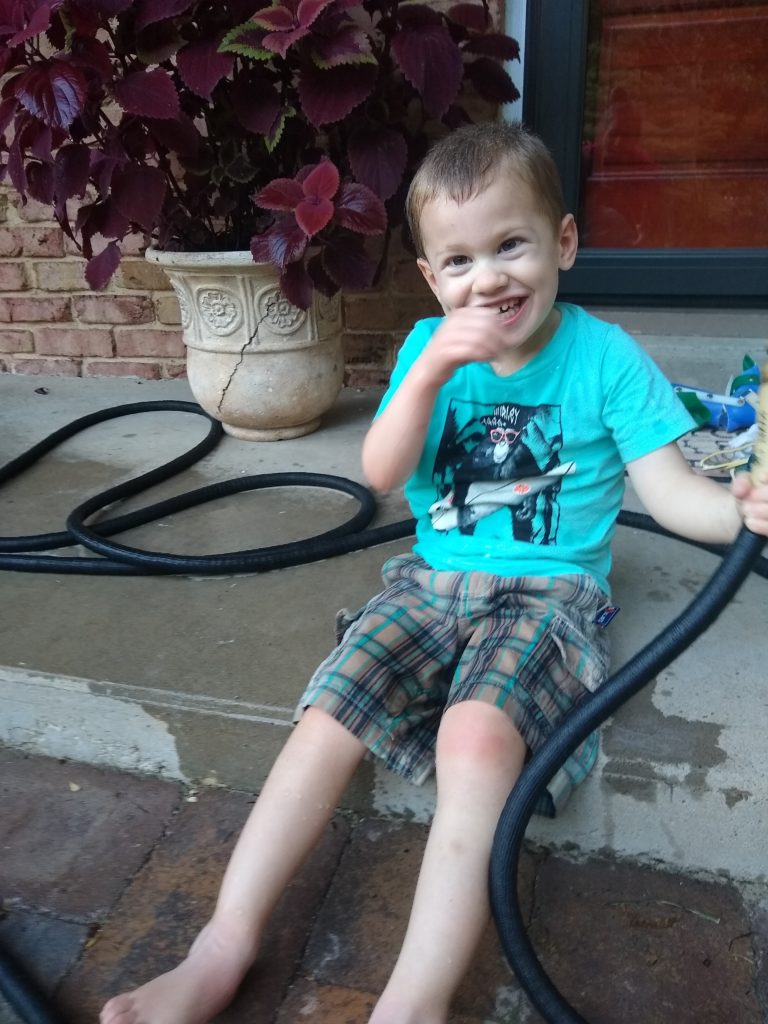“Anderson is the personification of determination. He can charm anyone with this sweet, endearing grin, and his silliness never ceases.”
A message from Anderson’s family:
As parents, we knew something was unusual with Anderson’s development as early as 6 months. We noticed things like his low muscle tone, inability to bring his hands together or follow an object with his eyes. We were told all babies develop differently. Doubt and dismissal of our concerns made us question ourselves often. We remember the day that Anderson’s pediatrician told us not to worry that his head circumference hadn’t grown since his previous appointment. When we returned for our follow-up appointment 3 months later, his head circumference still hadn’t grown. Around this time, Anderson was also diagnosed with failure to thrive.
As he learned to walk around 2 years of age, he constantly fell, lost his balance, and couldn’t sit up without falling backwards onto his head. He still couldn’t track objects or use a pincer grasp, and he often choked on food. Back and forth to specialists with no answers. Regularly holding down Anderson for bloodwork was traumatic for all of us. Anderson developed the “white coat syndrome.” Every doctor’s office visit turned into an immediate rush of trauma and fear. Every visit ended in disappointment for all of us.
We remember vividly being told “sometimes children have developmental delay and there’s simply no explanation.” We knew this was not just a delay and that only a medical condition could be causing these issues. We continued our efforts to find a cause. Our guts and persistence thankfully led us in the right direction: doctors with empathy and persistence of their own. The team of professionals, along with family, started noticing even more symptoms: downbeat nystagmus, eye rolls, toe-walking, coordination issues, etc. Two MRIs a year apart from one another showed cerebellar atrophy. Though we still had no answer, doctors warned us many times over that Anderson could have a degenerative illness.
Anderson was diagnosed with KAND at 4 years of age after years of extensive genetic testing. The diagnosis explained everything. The cerebellar atrophy, visual issues, ataxia, falls/injuries, late development, emotional and behavioral issues, and so many other symptoms.
Even with the implications of this diagnosis, Anderson has fought through so much to get where he is today. He is passionate about so many things and enjoys sharing his high-energy, excitement, and love with others. Despite motor and visual issues, the new loss of range of motion in his ankles and the development of spasticity in his legs, Anderson is a fierce warrior! No amount of falls, stitches, bruises or busted out teeth can stop him from enjoying life.




